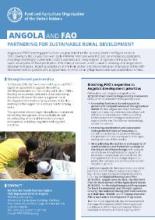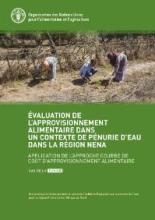Land Library Search
Through our robust search engine, you can search for any item of the over 73,000 highly curated resources in the Land Library.
If you would like to find an overview of what is possible, feel free to peruse the Search Guide.
/ library resources
Showing items 10 through 18 of 197.Le cadre juridique est le moyen par lequel s’effectue la transposition des exigences internationales découlant de la Convention-cadre des Nations Unies sur les changements climatiques (CCNUCC) en obligations concrètes et précises pour les pays forestiers, et ce, en fonction de leur situation prop
This ‘Policy Analysis of Nationally Determined Contributions in Europe and Central Asia’ follows up on the previous effort to report on implementation of Nationally Determined Contributions in the region.
Bangladesh is faced by a number of environmental crises, including an increase in the frequency and severity of extreme climatic events, a scarcity of natural resources and the degradation of the natural environment.
FAO’s current cooperation with the Lao People’s Democratic Republic focuses on fostering agricultural
production and rural development, improving food security and nutrition, protecting and enhancingAngola and FAO have engaged in close cooperation since the country joined the Organization in
1977. Owing to the 27-year civil war, early FAO interventions were focused on emergency assistance,Ce rapport fait état du diagnostic et de l’évaluation du système d’approvisionnement et de valorisation des ressources hydrauliques en Tunisie en rapport avec la sécurité alimentaire du pays, dans le cadre de l’Initiative régionale sur la rareté de l’eau lancée par la FAO.
The report “Transforming the livestock sector through the sustainable development goals” examines the sector’s interaction with each of the SDGs, as well as the potential synergies, trade-offs, and complex interlinkages involved.
Small-scale fisheries play a key role in ensuring food security and eradicating poverty. However, the overall development of the fisheries sector, as well as increased pressure from other sectors (e.g.
As climate change makes precipitation shocks more common, policymakers are becoming increasingly interested in protecting food systems and nutrition outcomes from the damaging effects of droughts and floods (Wheeler and von Braun, 2013).









